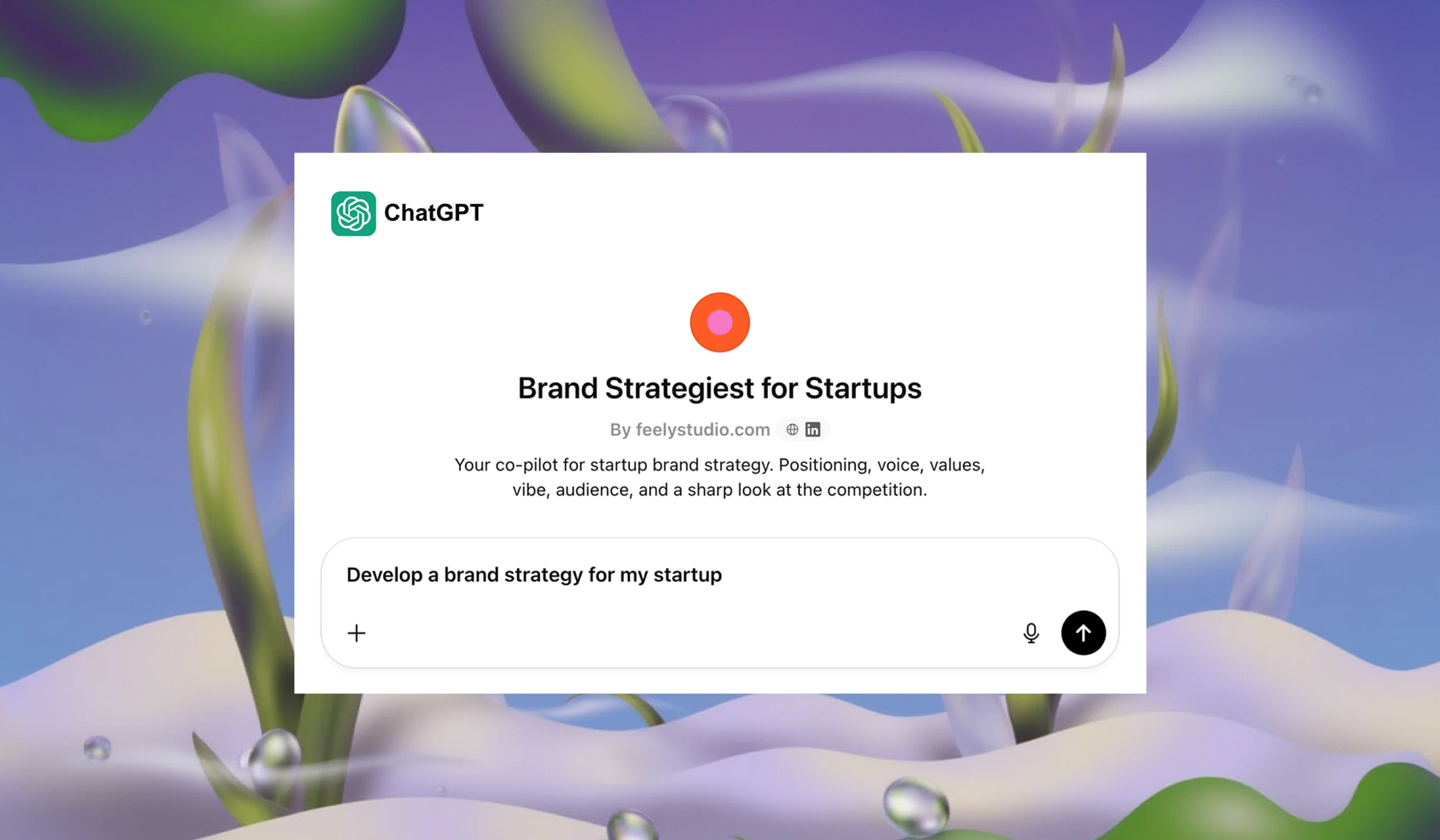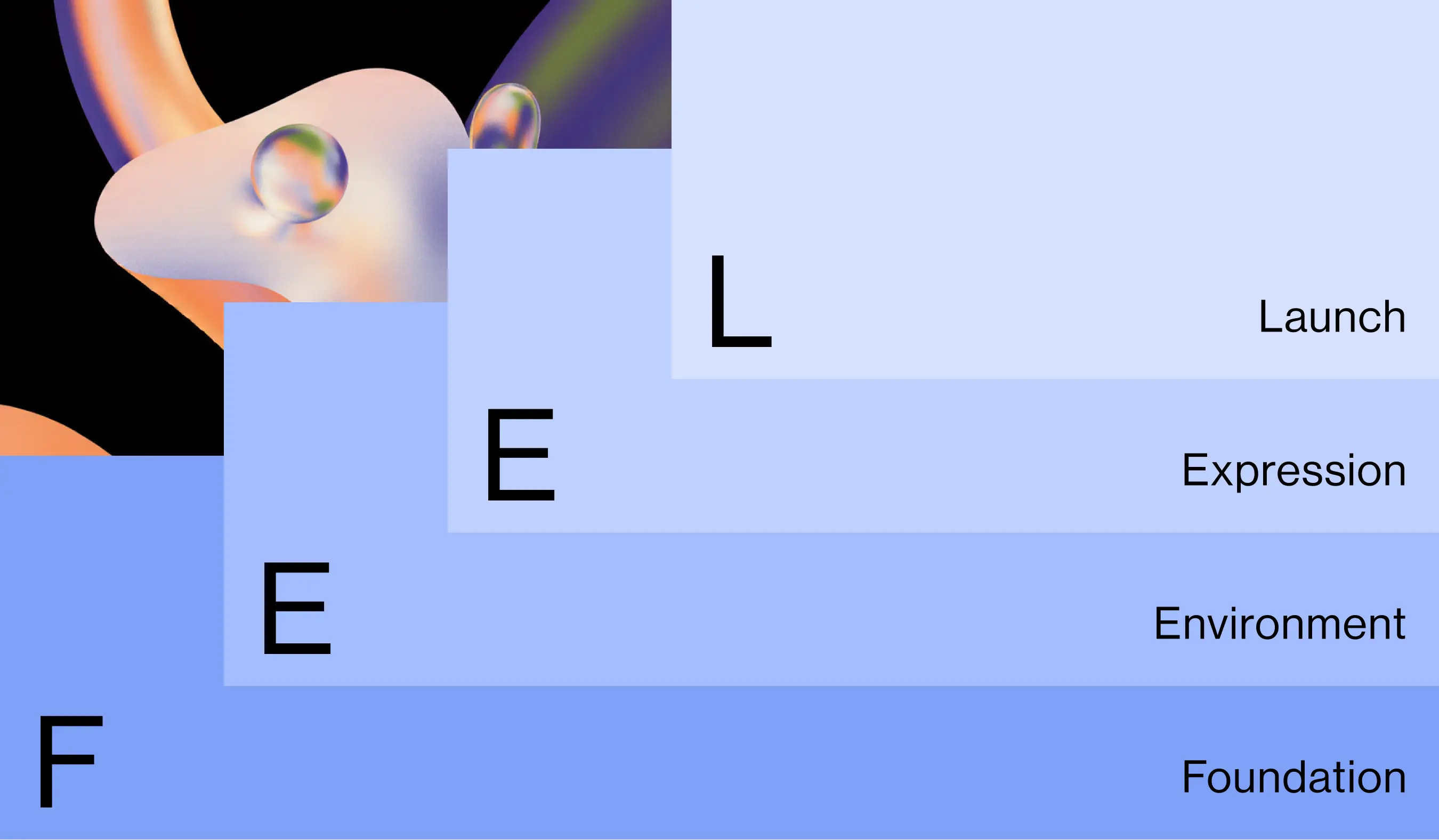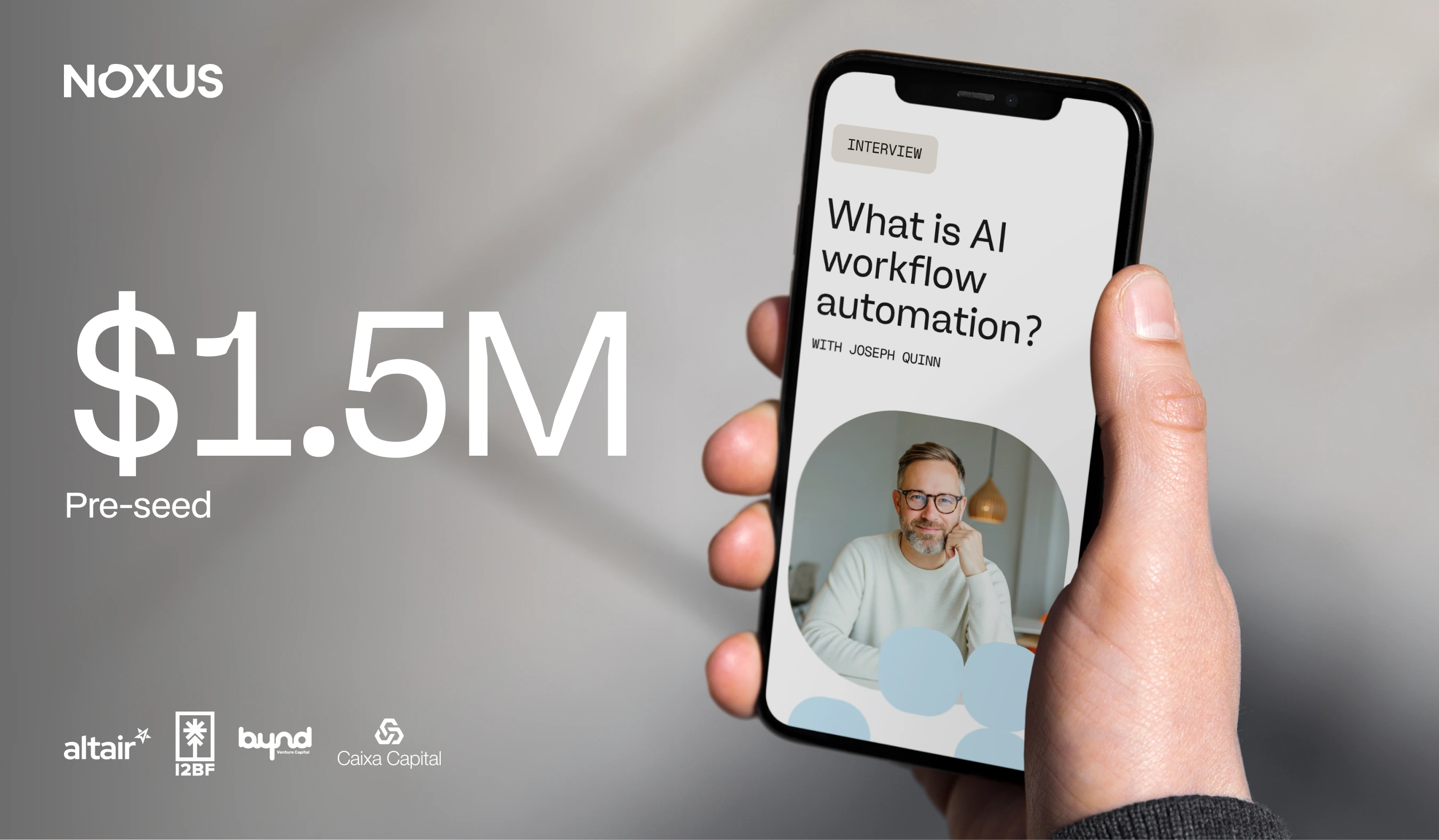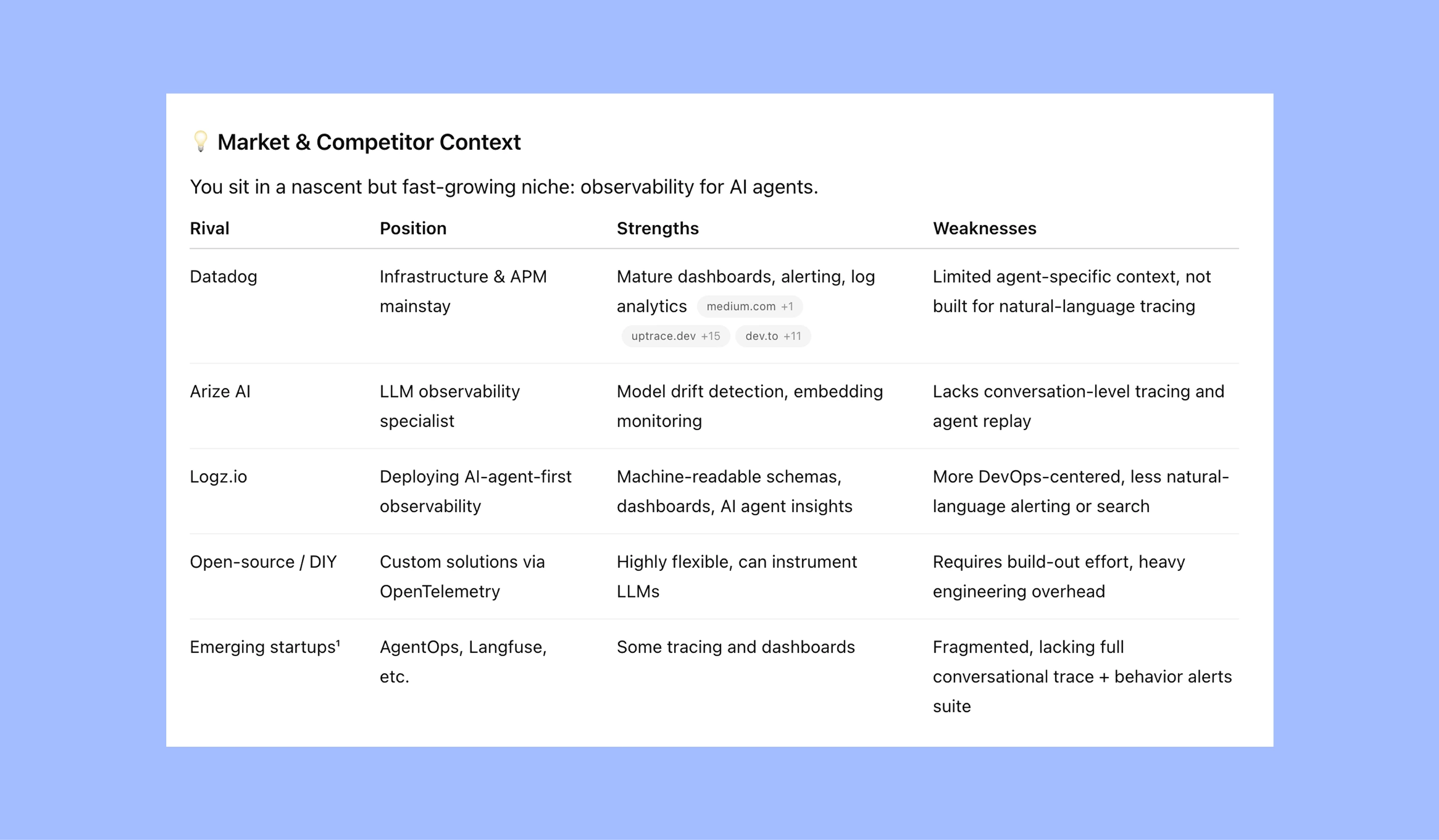August 8, 2025
Get Your Startup’s Brand Strategy In Minutes With Our Free Brand Strategy GPT
3 minutes
In this article
A strong brand and clear positioning help you explain what you’re building in a minute.
Without them, you risk blending in with competitors, confusing your audience, and losing momentum when it matters most.
In this post, we’ll break down what brand strategy is, why startups should care about it from day one, and how our Brand Strategy GPT can help you build yours in minutes, not months.
Skip reading and try the Brand Strategy GPT now if you’d rather jump straight in.

What is brand strategy?
Brand strategy is the blueprint for how your business communicates who you are, what you stand for, and why customers should care.
It’s more than a logo or a color palette, it’s the foundation of your positioning, messaging, and voice.
A strong brand strategy usually covers:
- Foundation — Your purpose, vision, and values.
- Environment — Your target audience, market context, and visibility goals.
- Expression — Your tone of voice, language rules, and personality traits.
- Launch — Your positioning line, key messages, and other go-to-market communication assets.
This framework keeps your team aligned, your marketing consistent, and your product story crystal clear.

Why startups need it early
- Clarity in a crowded market Startups compete against bigger players with more resources. A clear strategy helps you stand out.
- Investor readiness Investors want to know not just what you do, but why it matters and who will buy it.
- Faster marketing execution When your voice, audience, and positioning are already defined, writing copy for a landing page, pitch, or ad becomes much faster.
- Consistent storytelling Whether you’re pitching to a VC, talking to a prospect, or hiring a new teammate, your story stays the same—and sticks.
Want to go deeper? We explain this in more detail in Why Does an Early-Stage Startup Need Branding?

How our brand strategy GPT works
At Feely Studio, we’ve built Brand Strategy GPT as a quick, collaborative tool for early-stage founders who need direction fast.
Here’s the process:
- Answer Six Quick Questions The GPT starts by asking about your product, audience, competitors, and unique edge. Your answers shape everything that follows.
- Phase-by-Phase Co-Creation Using our FEEL framework (Foundation, Environment, Expression, Launch), the GPT builds your strategy one section at a time. You review and approve before moving forward.
- Competitive Insights If you share competitors, the GPT adds more through web research and creates a clear comparison snapshot.
- Final Strategy Document Once all phases are approved, you get a concise, actionable brand strategy ready to use in decks, landing pages, and investor materials.

Why use our custom GPT instead of doing it alone?
- Speed — Go from blank page to brand strategy in under 10 minutes.
- Structure — No wondering “what goes where”—it’s all mapped out.
- Collaboration — You guide the tone and content, the GPT organizes and polishes it.
- Early-stage friendly — Perfect for teams that aren’t ready for a full brand sprint yet, but still need clarity.
Our Brand Strategy GPT is like an MVP for your brand — fast, simple, and perfect for early-stage clarity.
But if you’re serious about taking your brand to the next level, we’re here to help. At Feely Studio, we’ve helped tech startups secure investments and attract customers with clear positioning, sharp messaging, and standout design.
Try the Brand Strategy GPT here or get in touch with us to build the brand your startup deserves.
Next






